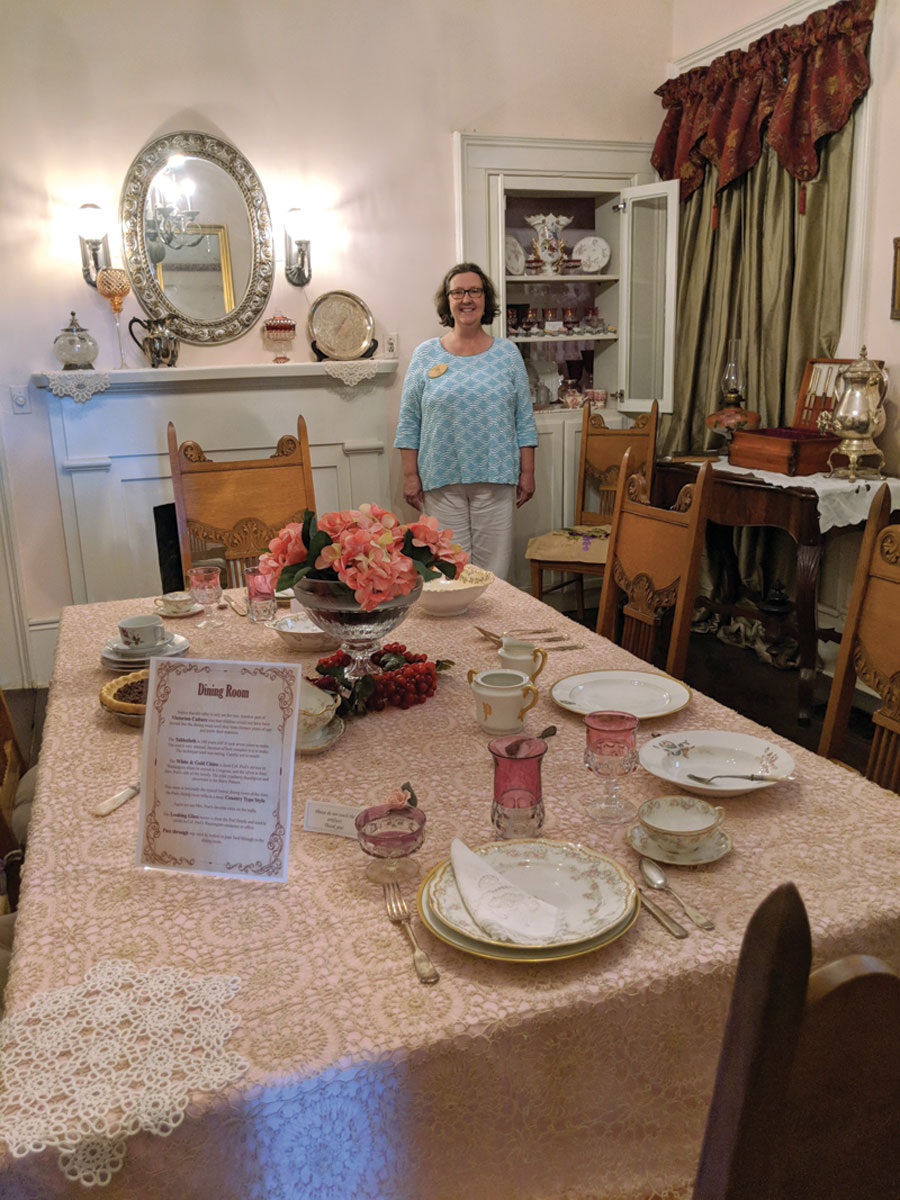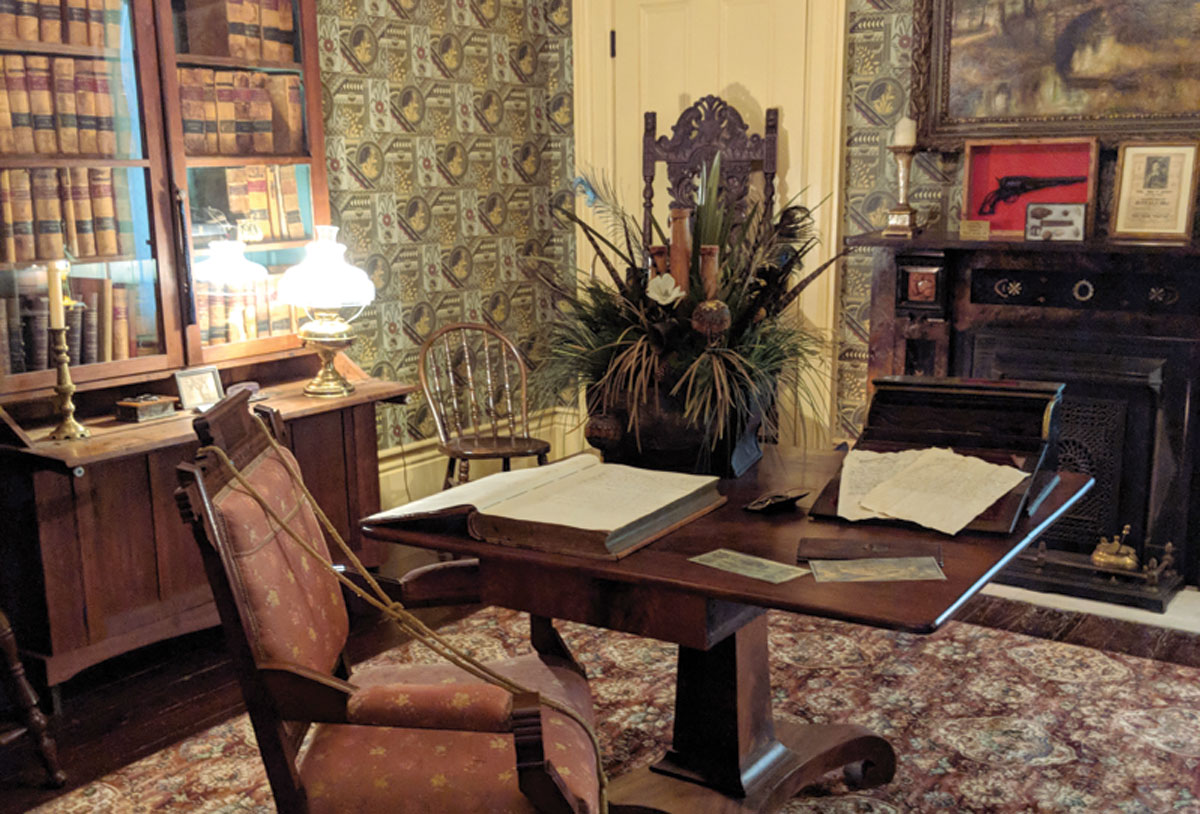 The Peel Mansion stands as a reminder of the past in Bentonville, Ark.
The Peel Mansion stands as a reminder of the past in Bentonville, Ark.
Treasures of our time are stubborn and serene little islands hidden away in burgeoning cities. One of these is the Peel Mansion in Bentonville, Ark.
Samuel and Mary Emaline Peel met in Carroll County, Ark., with Samuel spending his childhood in various county locations and Mary Emaline arrived from Alabama when her family settled there. According to volunteer Kay Weiderhaft, a favorite story is the genteel and much younger Mary Emmaline refusing Samuel’s continued marriage proposals until he promised to build her a Southern-style mansion.
“Mary Emaline was a very patient woman,” an amused Kay explained. “After the couple married, Samuel did not fulfill his promise until 25 years later in 1875 when their oldest of nine children was 21, but he did so in a grand style that is now available for all to view.”
An important significance of the Peel story and mansion is what they reveal about living through the entire Civil War era. In spite of seceding from the Union only after Lincoln requested troops, Arkansas had people loyal to both sides and going to war against friends and neighbors was a grim reality that troubled Samuel Peel who came from a strong southern family.
The story begins with Samuel and Mary Emaline marrying in 1853 and Samuel working as the elected County Clerk in pre-Civil War days. Realizing precious records were in danger from war, Samuel is reputed to be responsible for saving those records by hiding them in a cemetery before Union troops could descend and destroy them. Though he successfully retrieved the records after the war, the courthouse burned a year later and the records were destroyed.
Samuel enlisted in the Confederate Army and was one of only 75 soldiers out of 500 that survived a skirmish in the Prairie Grove (Ark.) battle. Records indicate that he mustered out as a lieutenant colonel and signed the required amnesty papers pledging to support the reunited Union and the Emancipation Act, which he already supported.
After the war, Samuel studied law and was admitted to the bar in 1865. Samuel identified himself as a merchant and farmer until listing himself as a lawyer in the 1870 census.
In 1867, he entered into partnership with his brother-in-law James Berry, who subsequently became the 14th Arkansas governor. Samuel’s law career is most noted for being the attorney for the Five Civilized Tribes in Oklahoma, with Native American leaders sometimes camped around his home where some treaties were signed. In 1878, Samuel became the first Arkansas-born Congressman and served in Washington for 10 years and subsequently opened the First State Bank of Bentonville in the 1890s as part of his diversification of income.
In 1875, Samuel built the three-story, 6,000 square-foot mansion he promised Mary Emaline so many years ago. The structure sat on a 140-acre farm with 110 acres devoted to a productive apple orchard and income source, as well as impressive oaks, one of which still shades the front yard. Mary Emaline commandeered 15 acres for an extensive garden and livestock area. One of the impacts of the Civil War was that Mary Emaline dedicated herself to seeing that no one went hungry as she and their family did during the war. She became a neighborhood philanthropist with food always available for anyone who needed it.
The house was built in popular 1870s Victorian era Italianate style and included the typical decorative porch and extended roof eaves bedecked wooden detail. The home was tall and T-shaped with 12 1/2-foot ceilings throughout and 18 to 24 inches of brick serving as insulation. Brick for the home was fired from local porous red clay with lumber locally milled as well. The huge home contained only four bedrooms with all of the girls sharing one room, and taking most of their possessions with them when they married, as was the tradition of the time.
“Security was an issue so the mansion’s ‘hidey hole’ was the bottom section of the foyer staircase, which could be pulled out for the safekeeping of valuables” Kay added.
Pink was Mary Emaline’s favorite color and can be seen in various forms throughout the house. Her china and glassware reflected this preference, as did the wallpaper in the front parlor, which was accurately duplicated from a remaining fragment. The parlor also contains an impressive 1850s morning piano as a representation of a now outdated tradition of displaying the deceased in homes rather than in funeral parlors.
Samuel’s study typifies the tradition of polished wood, bookcases and darker colors. Two much-treasured items are Samuel’s laptop desk and the desk and chair of James Berry when he was governor. Other treasured items in the mansion include Bucky, a 150-year-old rocking horse that served the family for at least four generations before being allowed to return home.
Thanks to Arvest Bank, touring the home is free. The attraction is open Tuesday through Saturday from 10 a.m. until 3 p.m.
The Peel Mansion hosts events as well as tours. Each year the museum offers a two-week Fall School Days event with 1,400 children treated to various stations demonstrating life in 1875. A Christmas open house runs from Thanksgiving to New Year’s and features stunning decorations provided by different organizations. Additional private events include weddings, meetings and special group tours.
Lynne Walton, board president of the Peel Compton Foundation, is a regular attendee at events and always supports local talent and volunteers. The 3 1/2-acre site is also known for its outstanding landscaping and gardens including many heritage species, which are managed by botanist and master gardener Zella Norman.
“We are proud of this sweet old lady and take care of her so others can enjoy her as well,” Kay declared.







